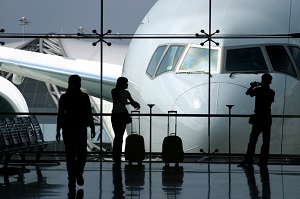 Some very fortunate people have the luxury of having to decide whether to use a commercial airline or private aircraft when they want to travel. Using a private plane may offer a number of advantages, but it has proven to be less safe. According to a report that looked at government aviation records and statistics from the National Transportation and Safety Board (NTSB), the accident rates for private flights has risen over 19 percent in the last ten years. The rate of fatalities for private flights has increased by approximately 24 percent during the same time. When two crew members passed away in a commercial plane accident in 2013, it was the first deaths on a commercial carrier during the previous three years. Hundreds of individuals pass away each year as a result of private plane accidents. Fatalities from commercial aviation are becoming very rare.
Some very fortunate people have the luxury of having to decide whether to use a commercial airline or private aircraft when they want to travel. Using a private plane may offer a number of advantages, but it has proven to be less safe. According to a report that looked at government aviation records and statistics from the National Transportation and Safety Board (NTSB), the accident rates for private flights has risen over 19 percent in the last ten years. The rate of fatalities for private flights has increased by approximately 24 percent during the same time. When two crew members passed away in a commercial plane accident in 2013, it was the first deaths on a commercial carrier during the previous three years. Hundreds of individuals pass away each year as a result of private plane accidents. Fatalities from commercial aviation are becoming very rare.
Regulations
There are a number of different tiers in U.S. law that carefully regulates all aspects of commercial aviation. Most people don’t realize there is very little if any oversight of private aircraft. The main problem with private aircraft laws is many people who operate private aircraft don’t pay attention to them. There is no mechanism in place to make certain there is compliance with private aircraft laws. Representatives from the NTSB have stated that more regulations are not the answer to increasing the safety of private planes.
Private Plane Crashes
According to statistics provided by the NTSB, the major cause of private plane crashes are pilot error. In many cases, something happens, and the pilot loses control of the private plane. The pilot does not have the skill or training to regain control and avoid crashing the plane. Private aircraft pilots may not know how to handle the aircraft when it stalls. The pilot of a small plane may not be qualified to fly by only using the plane’s instruments. The plane can fly into clouds or a low-visibility situation, and the pilot ends up not being able to see where the plane is going. Commercial aircraft are designed with a number of required safety features and they are much larger than private planes. Studies of aviation records show that sitting in the rear of the plane is the safest spot in the event of a crash. They have co-pilots, navigation backup systems as well as extra engines and more. Once a private pilot completes their training, they are only required to pass a minimal proficiency check once every two years.
FAA Policies
Many people in the world of aviation feel the current FAA policies regarding private aircraft are not working. Years ago, the FAA designed a plan to decrease the rate of accidents in private aviation. The goal was a reduction of ten percent by 2018. The rate of private aircraft accidents has continued to remain steady. There are over 1,450 such aviation accidents each year that cause more than 449 fatalities. Some in the aviation industry believe all private pilots should be required to have liability insurance. This would require them to have better training to get the insurance. At this time, there are no federal requirements for private plane pilots to have insurance that covers injuries to passengers or those on the ground impacted by an accident. Too often people affected by a private plane crash discover the pilot did not have insurance.
